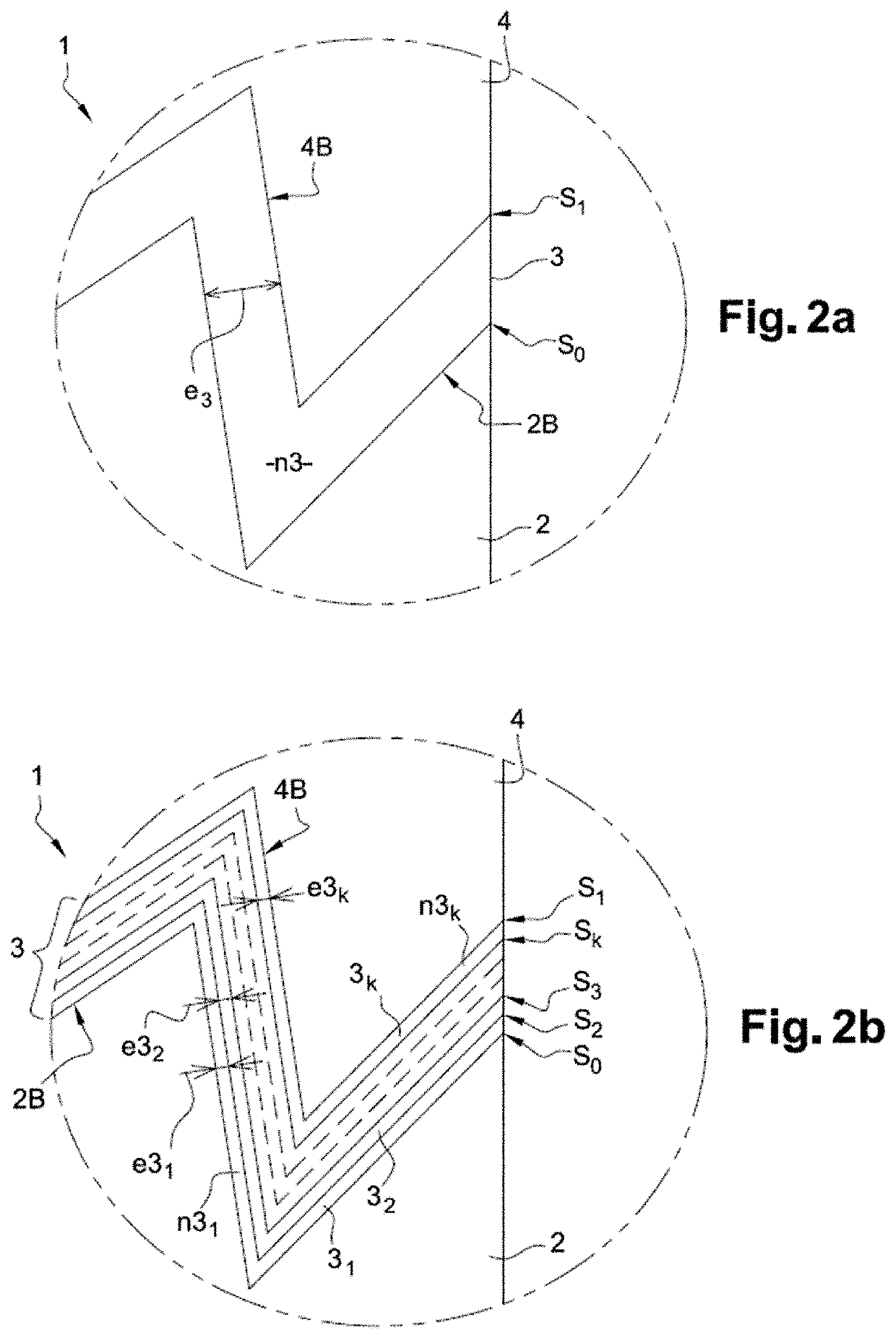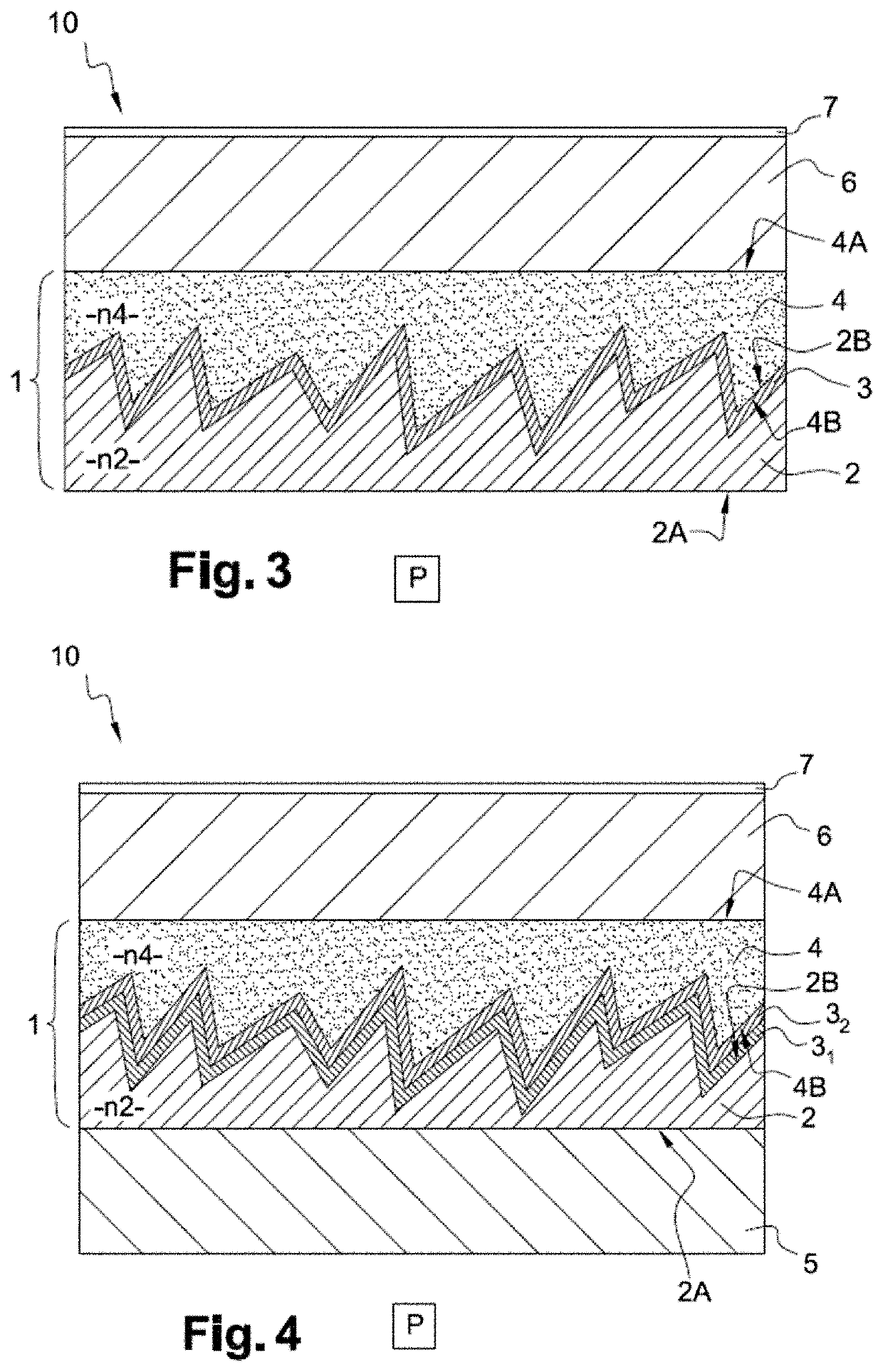Layered element made of transparent layers providing directional diffuse reflection
a technology of diffuse reflection and transparent layers, which is applied in the direction of optical elements, synthetic resin layered products, instruments, etc., can solve the problems of not allowing images to be formed on any one of their faces, generating clear reflections, and specular reflections that may dazzle the observer, so as to limit the luminous dispersion of radiation passing and improve the clearness of vision through the layered element
- Summary
- Abstract
- Description
- Claims
- Application Information
AI Technical Summary
Benefits of technology
Problems solved by technology
Method used
Image
Examples
Embodiment Construction
[0110]Unless specified otherwise, a given element appearing in various figures has been referenced with a single reference. For the sake of clarity of the drawings, the relative thicknesses of the various layers have not been rigorously respected in FIGS. 2 to 4. In addition, the possible variation in the thickness of the or each constituent layer of the central layer as a function of the slope of the texture has not been shown in these figures, it being understood that this possible variation in thickness does not affect the parallelism of the textured contact surfaces. Specifically, for each given slope of the texture, the textured contact surfaces are parallel to one another. Moreover, it will be noted that the contact surfaces are shown only schematically in FIGS. 2 to 4, it being understood that their texture respects the slope-distribution criterion of the invention.
[0111]FIG. 1, which schematically shows diffuse and specular reflection of radiation incident on a layered eleme...
PUM
| Property | Measurement | Unit |
|---|---|---|
| length | aaaaa | aaaaa |
| length | aaaaa | aaaaa |
| length | aaaaa | aaaaa |
Abstract
Description
Claims
Application Information
 Login to View More
Login to View More - R&D
- Intellectual Property
- Life Sciences
- Materials
- Tech Scout
- Unparalleled Data Quality
- Higher Quality Content
- 60% Fewer Hallucinations
Browse by: Latest US Patents, China's latest patents, Technical Efficacy Thesaurus, Application Domain, Technology Topic, Popular Technical Reports.
© 2025 PatSnap. All rights reserved.Legal|Privacy policy|Modern Slavery Act Transparency Statement|Sitemap|About US| Contact US: help@patsnap.com



